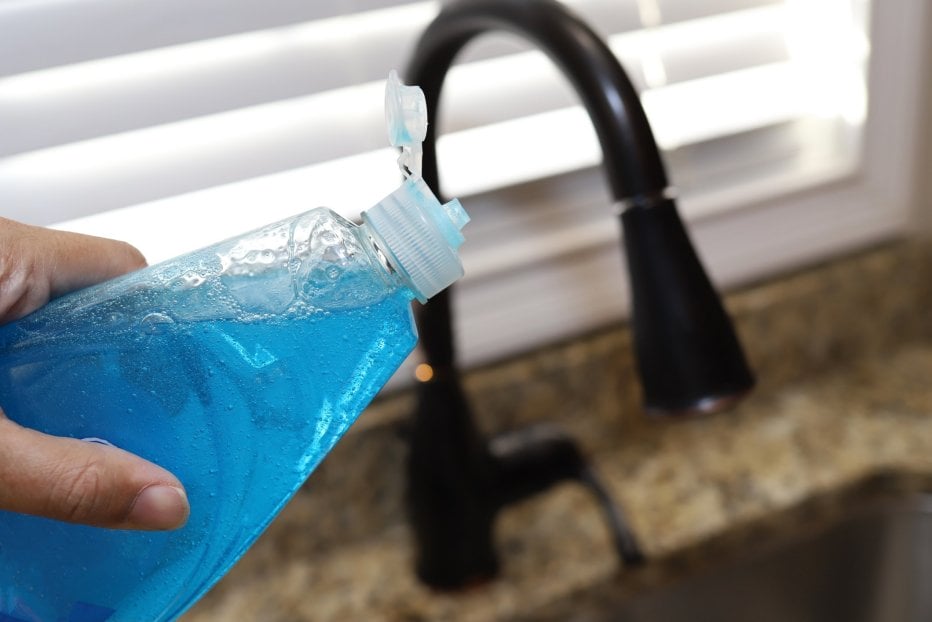What’s the Deal with Dawn?

By Dee Howard – Owner of Sootsoap
Dawn dish detergent has become a bit of an urban legend when it comes to decon – if it’s good enough for baby ducks, it’s good enough for you… right? Where did this legend come from, what’s in Dawn, and should you use it for your own decon procedure?
Let’s fact-check. A study was done in 2017 to test the effectiveness of decontamination procedures on gear and skin. We learned two things from this study that are now commonly referenced:
- Wipes were 54% effective in the reduction of PAHs (polycyclic aromatic hydrocarbons; a group of toxins known to be carcinogenic and of particular concern in terms of risk from occupational exposure for firefighters) on neck skin
- Field decontamination consisting of 2 minutes of scrubbing with dish soap and water (“wet decon”) removed a median of 85% of PAHs from turnout gear, whereas dry brushing (“dry decon”) was only 24% effective. The soap used was Dawn Ultra Dishwashing Liquid.
Should you wash with water?
What about washing with water alone? Testing in 2019 studied the use of water alone to wash gear, and actually found a 42% increase in median PAH levels, though the following year, a team found a post-fire PAH reduction of 36% through urine testing following water “wash down”. Results of course are highly dependent on what is being washed and how, temperature, friction, length of time and the individual PAH compound being tested (smaller 2 and 3-ring PAHs like Naphthalene are easier to remove than the larger, more complex 5 and 6-ring compounds like Group 1 carcinogen Benzo[a]pyrene). What we don’t have are results from testing with a variety of decontamination options in a controlled study (yet). But let’s get back to Dawn.
Does dawn work to clean your gear?
Does Dawn work to clean your turnout gear? Clearly! Dawn has powerful surfactants – the ingredient(s) that lower the water surface tension, helping to collect and remove dirt. When combined with some serious scrubbing over 2 minutes, it significantly bumped up the median reduction of PAHs from 24% to 85% – a decent number! Is it the only product with powerful surfactants that do this? Absolutely not. It’s just the only one we have heard about with testing to back it up.
If Dawn works for gear, how do we know if we should use it on our bodies? A great resource for product and ingredient information is EWG (environmental working group, EWG.org). It’s certainly not the be-all and end-all and it’s always best to check individual labels and ingredient lists for accuracy, but it’s a really good indication of the safety of a particular product and its ingredients. Personal care products are given a number rating of 1 (the safest rating) to 10 (the least safe rating), and cleaning products are rated A (safest) through F (fail).
Dawn Ultra is given a D, or in terms of personal care, a 7. Don’t switch to Palmolive though … you’ll drop your grade to an F.
This (failing) grade is for a variety of reasons. Dawn lists particularly unfriendly ingredients from an environmental perspective (Triclosan, C9-11 Pareth-8, Methylisothiazolinone…), but there are also concerns with ingredients when it comes to human developmental and reproductive toxicity, allergies and irritation, organ effects, and yes, cancer, even with short-term exposure (look for warnings of “acute aquatic toxicity”). To be clear, when you’re shopping for your Shampoo and making sure you’re buying SLS-free, phthalate-free, paraben-free, fragrance-free… “Clean” shampoo with a capital C, note that Dawn is not that. But in all fairness, Dawn wasn’t designed to decontaminate your gear and certainly not your skin – it was designed to cut through the thickest grease and grime from your non-human dishes.
So, after we all go find a researcher and beg them to please-for-the-love-of-God start a more comprehensive personal decon study, how do we select a safer alternative for cleaning our bodies and our ducklings?
Check the label – always
Google each ingredient or plug it into EWG.org for a quick safety rating. Is that an ingredient you are comfortable lathering on your body? Would you wash your child with it? Does it make sense to use that ingredient in an attempt to clean carcinogens? Most countries like Canada and the U.S. require ingredients to be clear and present on product labels, so if you’re not liking what you’re seeing, or if the product you’re looking at does not have ingredient transparency, it might be prudent to avoid it.
The smell test
That smoky smell that is so hard to get rid of is a proven indication of toxins present in your skin and body. A 2021 study tested firefighters’ urine post-fire and found that smoke odor on the skin after a fire is significantly associated with an increase in PAHs in your system. Conversely then, if your personal decon product gets rid of that smoky smell, you can have some assurance that it is getting rid of toxins that cause it.
Testing
Evaluate testing like an inquisitive 4-year-old. Was the testing done by an independent lab? Who paid for the testing and was there bias? What was the methodology and is there public access to it? What toxins were tested and on what medium? What was the concentration? The length of time? Is the sample size statistically relevant (large enough to show confidence in repeatable results)? Has it been peer-reviewed? Is the stated result or claim reflective of the study itself? The truth is, there is currently no standardized testing, so we need to evaluate any claims with a demanding eye.
Oh, and someone should probably tell the ducklings.
Podcast
Contests & Promotions
















